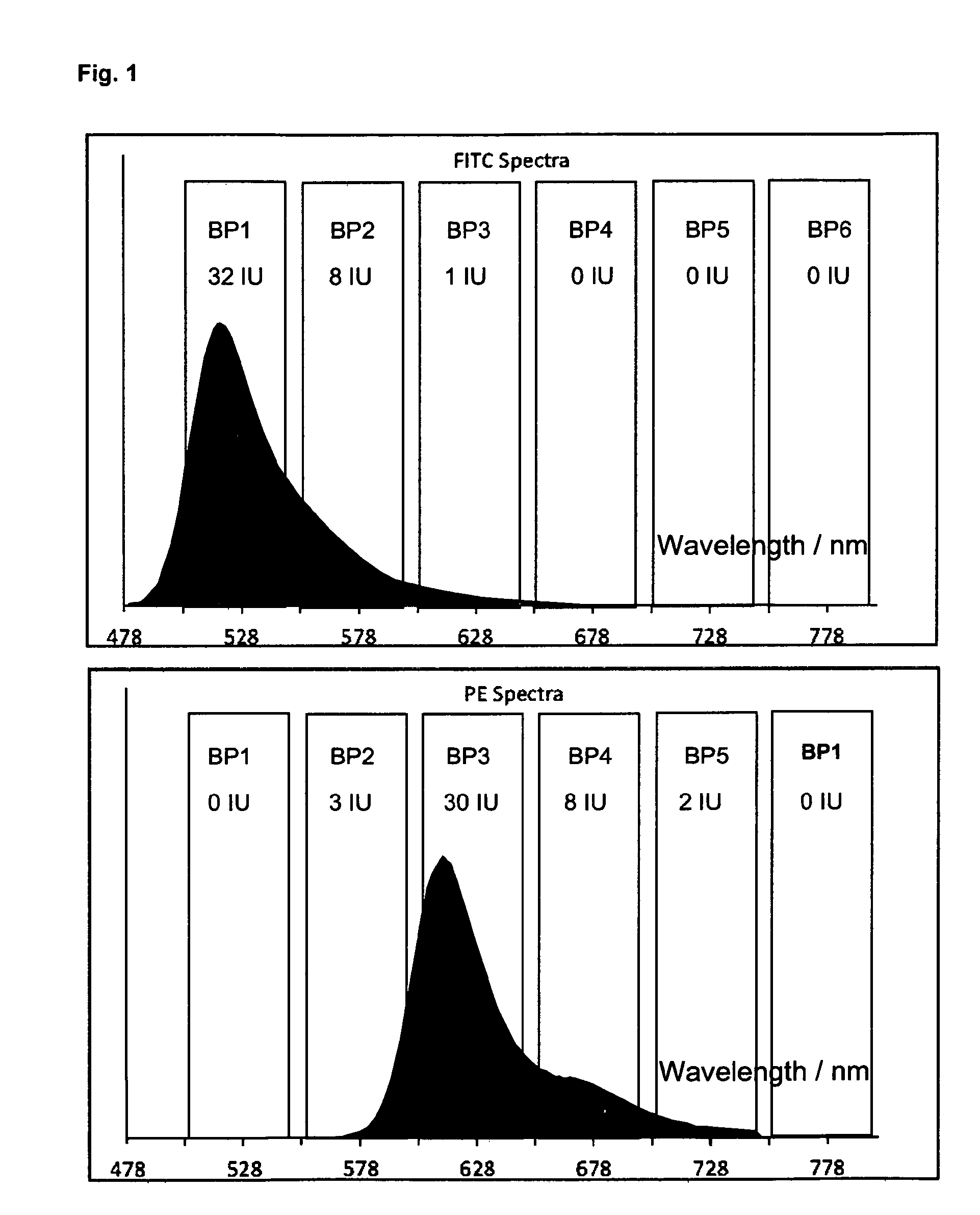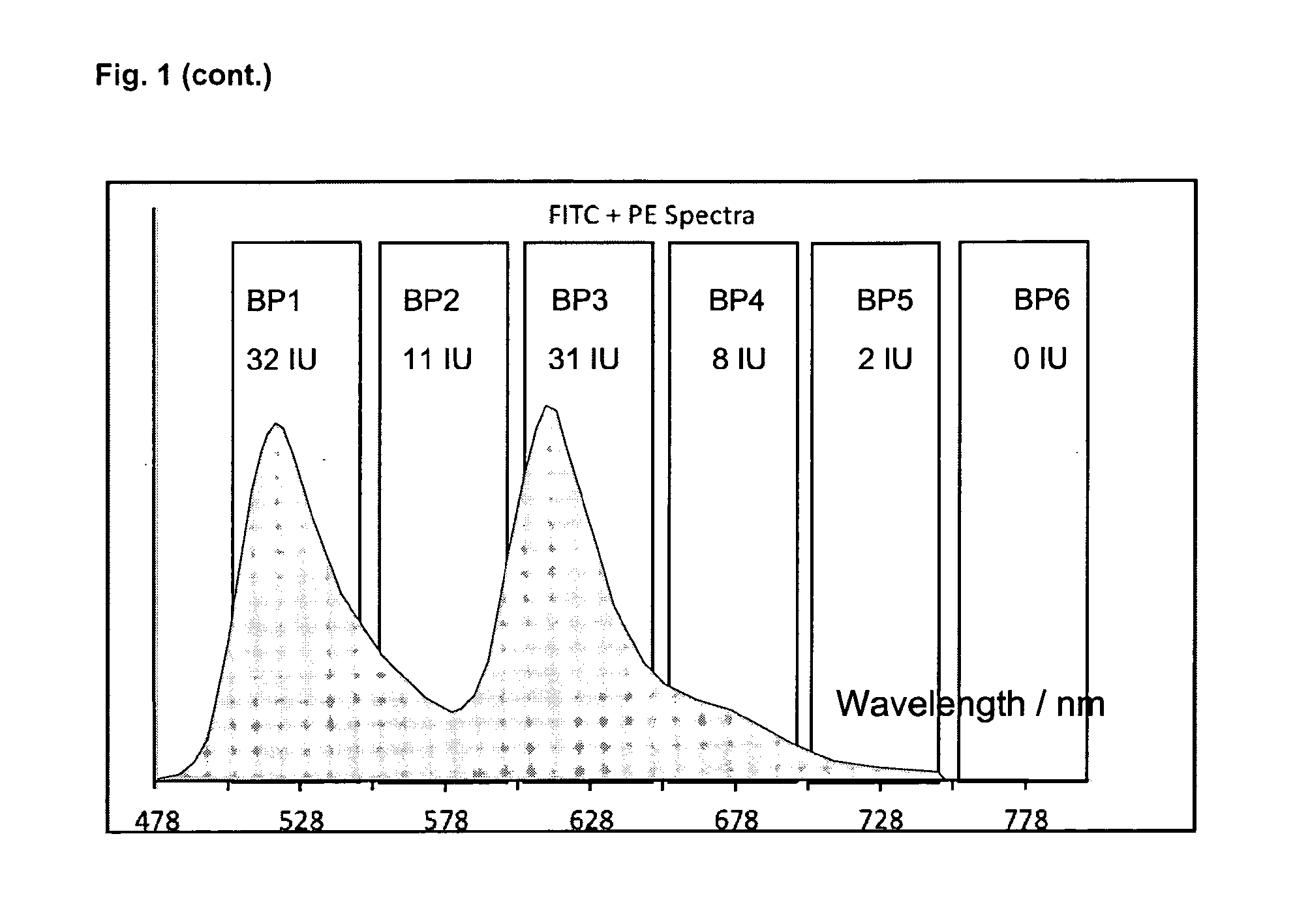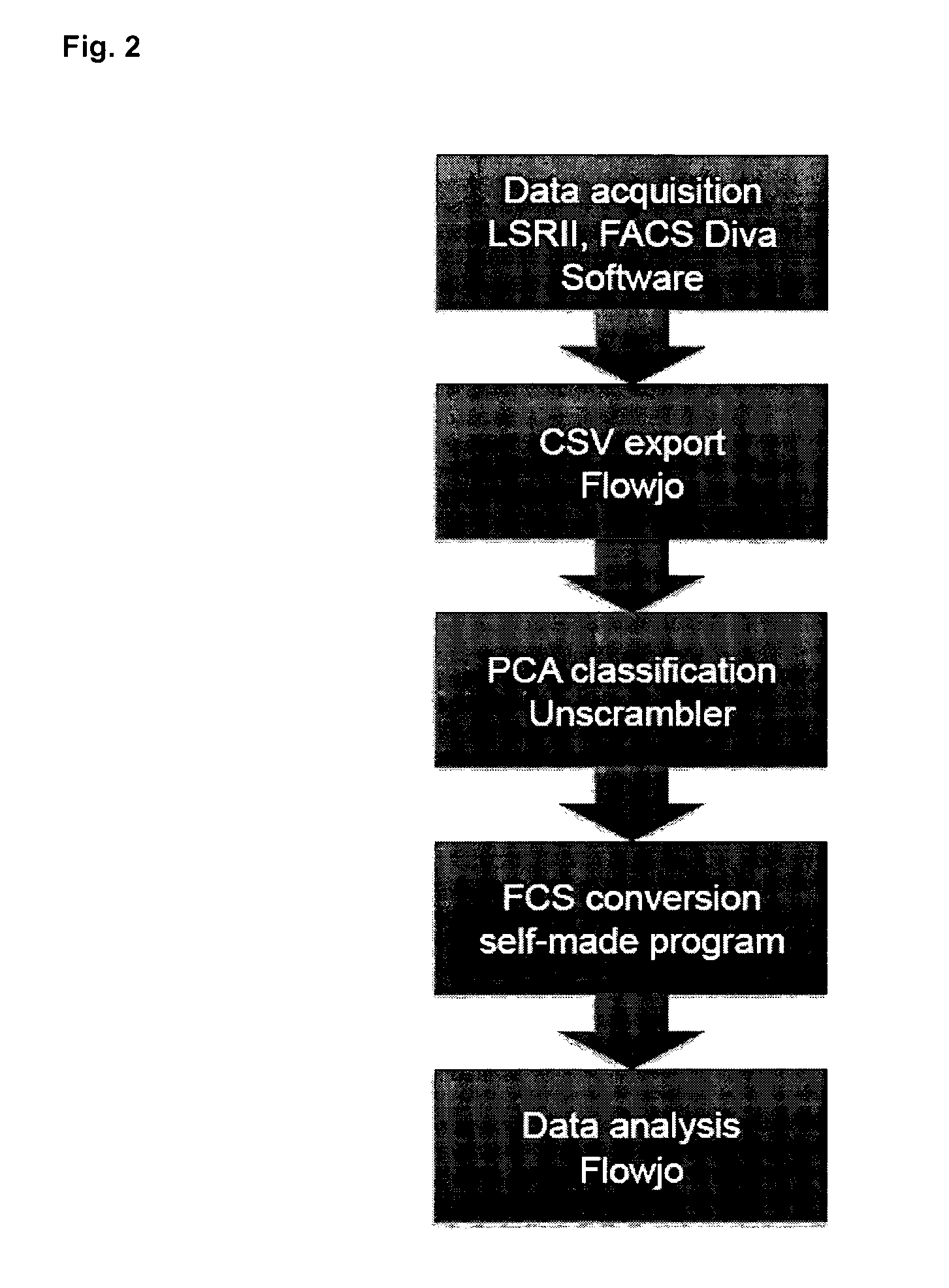Principle component analysis (PCA) - based analysis of discontinuous emission spectra in multichromatic flow cytometry
a flow cytometer and discontinuous emission technology, applied in the field of principle component analysis (pca)based analysis of discontinuous emission spectra in multichromatic flow cytometry, can solve the problems of limited detection, limited sensitivity and resolution of partially overlapping fluorescence signals, and difficulty in analysis of high-dimensional datasets, especially in a non-hypothesis driven manner, to achieve the effect of increasing the sensitivity of the flow cytometer, reducing the number of incorrect analyses, and improving the effect of
- Summary
- Abstract
- Description
- Claims
- Application Information
AI Technical Summary
Benefits of technology
Problems solved by technology
Method used
Image
Examples
Embodiment Construction
[0047]The invention describes a system, in which discontinuous emission spectra is acquired and analyzed by principal component analysis (PCA). In a proof-of-principle study it was shown that the simultaneous detection of up to 4 fluorochromes, which were all excited by a 488 nm Argon-laser could be resolved by the detection of a discontinuous emission spectrum. In other words a standard cytometer was used just by changing the optical filters as a multispectral cytometer. No further expensive modifications as described in the literature are required (ref. 4, 5). For simplifying data processing, PCA algorithms have to be implemented in standard flow cytometry software.
[0048]The invention enables new possibilities in combining fluorochromes with similar emission spectra for the first time. For a complete unsupervised analysis of multi-chromatic flow cytometry data, additional tools, such as the Probability Binning algorithm (ref. 6) are preferably implemented, which finally will help ...
PUM
| Property | Measurement | Unit |
|---|---|---|
| wavelength | aaaaa | aaaaa |
| side length | aaaaa | aaaaa |
| wavelength bands | aaaaa | aaaaa |
Abstract
Description
Claims
Application Information
 Login to View More
Login to View More - R&D
- Intellectual Property
- Life Sciences
- Materials
- Tech Scout
- Unparalleled Data Quality
- Higher Quality Content
- 60% Fewer Hallucinations
Browse by: Latest US Patents, China's latest patents, Technical Efficacy Thesaurus, Application Domain, Technology Topic, Popular Technical Reports.
© 2025 PatSnap. All rights reserved.Legal|Privacy policy|Modern Slavery Act Transparency Statement|Sitemap|About US| Contact US: help@patsnap.com



